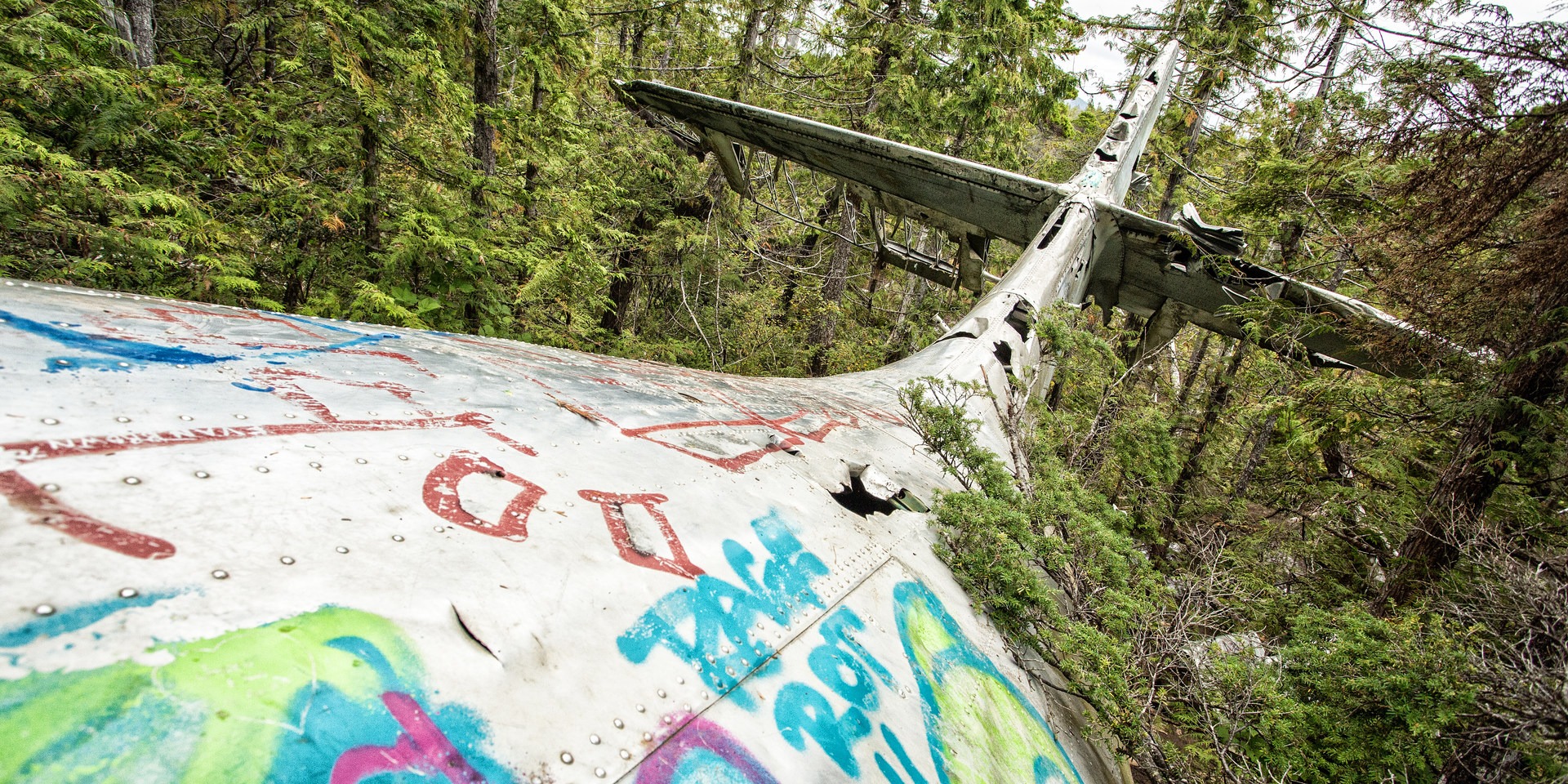You are here
On February 8, 1945, flight 11007, a small amphibious Consolidated Canso anti-submarine airplane carrying 12 members of the Royal Canadian Air Force, took off from the Tofino airstrip at approximately 11 p.m. Shortly after takeoff the plane’s engine failed and the pilot, Ron J. Scholes attempted to turn back, but the wing of the plane clipped the tops of trees while executing the 180-degree turn. Realizing that they would not make it back to the airstrip and fearing a deadly head-on crash into the hillside, the pilot stalled the plane’s remaining engine to reduce speed as much as possible before intentionally crashing the plane into the forest, where it spilled out thousands of gallons of fuel and burst into flames. Miraculously, thanks to the Scholes’ quick thinking, all 12 people onboard survived and managed to extinguish the fire and retrieve a parachute from the wreckage, under which they took shelter for eleven hours until rescuers arrived. Later still, members of the RCAF returned to the site to remove the leftover weapons and detonate two depth charges that had been onboard. Today the wreckage of the plane is one of several remaining vestiges of the network of radar stations and military bases that was built on the west coast of Vancouver Island starting in 1941 with the intention of keeping a potential Japanese invasion at bay.
The trail to the wreckage is unsanctioned and unmaintained, but it is used often enough that it’s not overly difficult to follow with some directions. The trailhead is alongside the highway, and it takes bit of detective work to locate. Park at the parking lot at the bottom of Radar Hill and walk south along the highway to the 15th telephone pole (pictured). There are a couple of decoy trail entrances beside other telephone poles, so make sure to keep count. The next part of the hike is an easy, wide forested trail, that climbs gradually until it passes through an old abandoned building, presumably another remnant from the war. After checking out the graffiti in the abandoned building, take the trail steeply downhill directly outside the back door and you’ll reach the only tricky part of the trail, a section that passes through a very muddy and unavoidable bog. Here several attempts to circumvent the mud have resulted in many different routes through the mud. In places there are ropes hung across the bog to hold onto and mark the route, as well as small yellow signs that mark the border of Pacific Rim National Park. It’s helpful to have a GPS during this section, as it’s easy lose your sense of direction while navigating the bog. The bog should take around a half hour to get through, or potentially more depending on the season. During the springtime or after rainy periods the mud can be thigh deep or even deeper, and even during the driest months of the year it is often up to the knees, so bring some rubber boots and expect to get dirty!
Soon after emerging from the bog the trail passes by a small round pond that seems unnatural and out-of-place; this is because it is actually the crater left by the controlled detonation of the bombs from the plane following the crash. Parts of fuselage start to appear scattered beside the trail, and the tail end of the plane sticks out of the forest just beyond. The wreckage is still surprisingly intact after more than 70 years, though many visitors have left their mark in the form of graffiti. Be very careful around the wreckage, as there are many jagged edges and rotting metal surfaces that could give way under the weight of a person.
Note that there will be free entry to all Canadian National Parks for the entirety of 2017 to celebrate the 150th anniversary of Canadian Confederation.
Logistics + Planning
Current Weather: Powered by Dark Sky
























Comments
Sign In and share them.